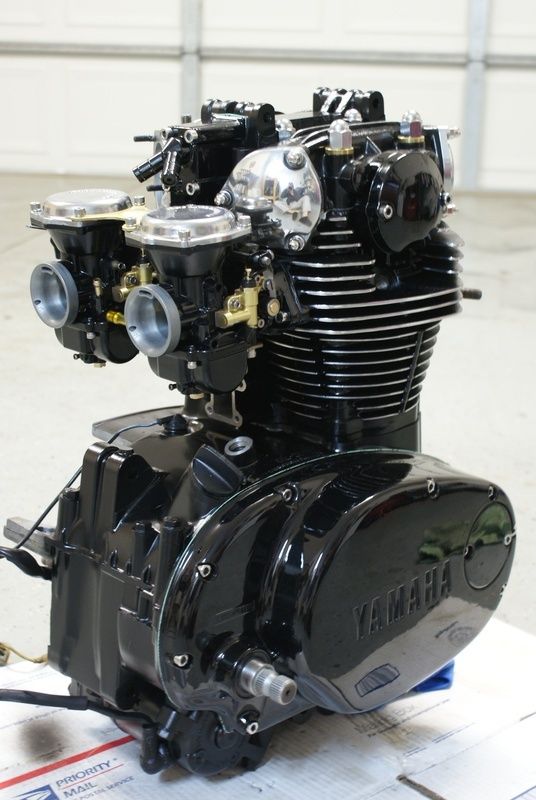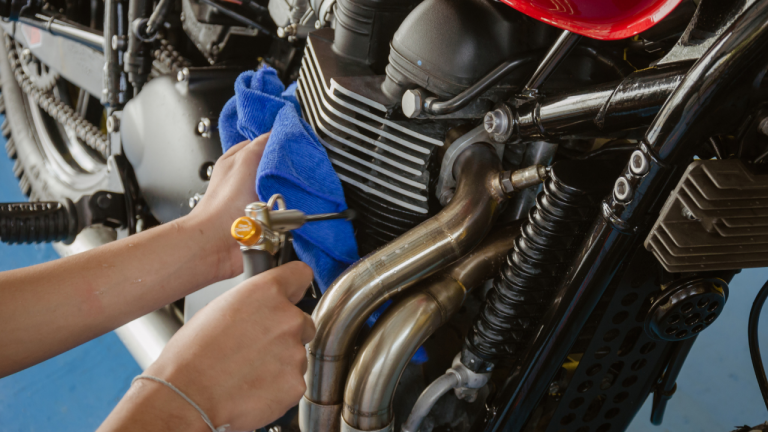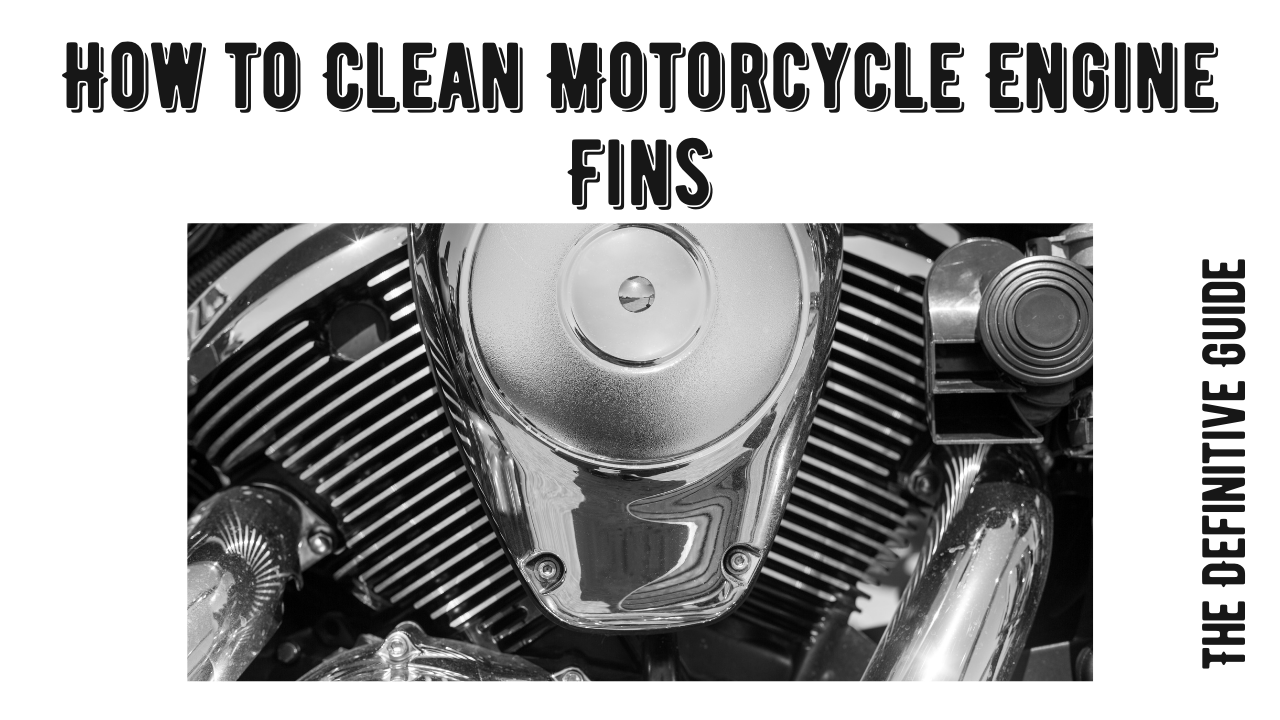If you’re a motorcycle owner, then you know that keeping your bike in good condition is essential. One of the most important but often neglected parts of a motorcycle is the engine. The engine fins can quickly become clogged with dirt and debris, leading to decreased performance and even damage to the engine. In this blog post, we will teach you how to clean your motorcycle’s engine fins like a pro!
What are the Motorcycle Engine fins?
The motorcycle engine fins are the metal vanes that you see on the side of the engine. These are there to help dissipate heat from the engine. The air flowing past the fins cools the metal and helps keep the engine from overheating. The larger the surface area of the fins, the more cooling they will provide. Some people add more fins to their motorcycle engine for extra cooling, but this is not always necessary. As long as you have enough fin area, your engine should stay cool. Just be careful not to block any of the airflows to the radiator or oil cooler. If you do, it could cause your engine to overheat.
Where Can I buy motorcycle engine fins, and how much does it cost?
You can purchase motorcycle engine fins online and in brick-and-mortar stores. Pricing will vary depending on the retailer, but you can expect to pay anywhere from $30 to $100 for a set of fins. When shopping, check the reviews to ensure that you’re getting a quality product. Additionally, make sure that the fins are compatible with your motorcycle’s make and model. With a little bit of research, you should have no trouble finding the perfect set of fins for your bike.

How to Clean the motorcycle engine fins?
Engine fins are an essential part of the cooling system for your motorcycle. They help dissipate heat by increasing the surface area exposed to the air. Over time, however, the fins can become clogged with dirt and debris, reducing their efficiency. Fortunately, cleaning the engine fins is a relatively simple task that you can do at home with a few household supplies. Begin by removing any loose debris with a soft brush. Next, mix a soap and water solution and use it to scrub away any stubborn dirt. Be sure to rinse the fins thoroughly afterward to remove any cleaner residue. If the fins are still not as clean as you would like, you can repeat this process using a more potent solvent such as a degreaser. Once the fins are clean, dry them off with a soft cloth before putting your motorcycle back together. With just a little bit of effort, you can keep your engine running cooler and extend the life of your bike.
How to Clean motorcycle engine fins using kerosine and soap?
Over time, your motorcycle’s engine fins can become clogged with dirt and debris, leading to overheating. Luckily, cleaning engine fins is a relatively simple task that can do at home with some essential household cleaners. Start by mixing equal parts kerosine and soap in a bucket. Next, use an old toothbrush or similar brush to scrub the solution onto the fins. Be sure to brush in both directions to loosen any stubborn dirt. Once you’ve washed the entire area, rinse the fins with clean water. You may need to repeat this process a few times to remove all the dirt and grime. With regular cleaning, you can help keep your motorcycle’s engine running cooler and extend its life.
How to Clean motorcycle engine fins using WD-40?
Your motorcycle engine fins can get pretty filthy depending on how often you ride and where you ride. But keeping them clean is essential, as build-up can cause the engine to overheat. Fortunately, cleaning motorcycle engine fins is easy – and you probably have everything you need in your garage already. Just grab a can of WD-40 and a rag, and you’re good to go.
First, make sure your motorcycle is turned off and cooled down. Then, spray WD-40 onto the fins, covering them all evenly. Let the WD-40 sit for a minute or two before wiping it away with the rag. Get all the nooks and crannies – those little spaces can easily trap dirt and grime. And that’s it! A few quick sprays and wipes, and your motorcycle engine fins will be shining like new.
How to Clean motorcycle engine fins using Oil Seal?
Oil Seal is an excellent product for cleaning motorcycle engine fins. It’s easy to use, and it does a great job of removing dirt and grime. Here’s how to use it: First, make sure the engine is excellent before starting. Next, apply Oil Seal to a clean cloth or brush, and then scrub the fins in a back-and-forth motion. Be sure to get into all the nooks and crannies. Once you’re finished, rinse the area with clean water. Then, dry the fins with a soft towel. That’s it! Your engine fins will be clean and shiny in no time.
How to Clean motorcycle engine fins using Vinegar
Over time, your motorcycle’s engine fins can become clogged with dirt and debris, reducing airflow and making your bike run less efficiently. Fortunately, cleaning engine fins is a simple process that can be done with vinegar. Just mix equal parts vinegar and water in a spray bottle and spray the solution generously over the fins. Let the fins soak for a few minutes, then use a soft brush to remove any remaining dirt. Rinse the fins thoroughly with water and dry them off before starting your motorcycle. With just a little bit of effort, you can keep your engine running cool and prolong the life of your bike.


- Foaming action clings to bike surfaces to deeply penetrate and quickly remove stubborn grease and grime from bike chains and the rest of the drivetrain
- Safe for all bike finishes and components, as it does not contain citrus, which can damage varnish and paint. Keep your bike looking and working just as good as the day you bought it
- They say a clean bike is a fast bike. WD-40 BIKE has something to help every type of bike and rider. From beginners to pro athletes, WD-40 BIKE products are there to keep your gears clean and your wheels spinning
- WD-40 BIKE products have undergone extensive testing at the hands of internal and 3rd party scientists, bicycle retailers, and professional mechanics. Experience the difference of a professional-grade formula

- Wd-40 Multi-Use Product, One Gallon
- More Of A Good Thing! Like All Wd-40 Multi-Use Products This 1 Gallon Drives Out Moisture And Quickly Dries Out Electrical Systems To Eliminate Moisture-Induced Short Circuits
- More Product Allows For Heavy-Duty Usage. Acts As A Corrosion Inhibitor To Shield Against Moisture And Other Corrosive Elements To Prevent Rust
- This Size Is Ideal For Soaking And Dipping. Frees Sticky Mechanisms, Loosens Rust-To-Metal Bonds And Helps Release Stuck, Frozen Or Rusted Metal Parts
- Buying In Bulk Is Economical. Lubricates Moving Parts Such As Hinges, Wheels, Pulleys, Rollers, Chains, And Gears

- Wd-40 Specialist Rust Remover Soak, One Gallon
- Dissolves Rust And Restores Old Metal Or Parts. This Non-Toxic Soak Made With Biodegradable Ingredients Helps Make Old Metal Look New Again Without Scraping, Chipping, Or Scrubbing. Get Your Tough Job Done Right
- Wd-40 Specialist Line Is Designed With Industrial-Strength Quality And Extreme Penetration For Your Hard To Solve Issues
- Safely And Effectively Removes Rust Without Acids Or Caustic Chemicals. It Is 50-State Voc Compliant And Nsf Category P1
- Ideal For Use On Auto Restoration, Tractors, Antiques, Farm Equipment & Implements, Trailers & Hitches, And Rusty Tools
When should you know when to motorcycle engine fins?
Like anything else on your motorcycle, engine fins can eventually wear out and need to be replaced. But how do you know when it’s time to make the switch? Here are a few things to look for:
First, take a look at the overall condition of the fins. Are they bent, cracked, or otherwise damaged? If so, then it’s probably time to replace them.
Next, check to see if the fins are still providing adequate cooling. If they’re not, that can lead to overheating, which can cause all sorts of problems.
Finally, listen to your bike. If you notice that it’s running hotter than usual or the engine noise is louder than average, those could be signs that the fins are no longer doing their job.
If you notice any of these things, it’s probably time to replace your engine fins. So don’t wait too long to make the switch – it could cost you down the road.
How to change motorcycle fins?
If your motorcycle fins are looking a little worse for wear, there’s no need to replace the entire engine. You can change the fins with elbow grease and get your motorcycle running like new. Here’s what you’ll need to do:
1. Start by removing the carburetor and air filter. It will give you access to the fins.
2. Use a screwdriver to remove the old fins. Be careful not to damage the cylinder walls.
3. Install the new fins, ensuring they face the same direction.
4. Reattach the carburetor and air filter.
5. Start the engine and check for leaks. Ensure that the fins are tightened down before taking your motorcycle for a spin!
FAQs about Motorcycle engine fins
Motorcycle engine fins are things that you overlook until you start looking for them. And once you start seeing them, you can’t help but wonder what they’re all about. So, here are a few FAQs about motorcycle engine fins.
Why are they important?
Fins play an essential role in cooling because they help to dissipate heat. The more surface area exposed to airflow, the faster it dissipates the heat. It is necessary for high-performance engines that run hotter than lower-performance engines.
Are all motorcycles required to have them?
No, not all motorcycles are required to have engine fins. However, most racing motorcycles and many high-performance street motorcycles do have them.
Can I remove my motorcycle’s engine fins?
In most cases, no. Fins play an essential role in cooling the engine and should not be removed unless necessary. Doing so could result in damage to the engine or reduced performance.
Are there any disadvantages to motorcycle engine fins?
The main disadvantage of motorcycle engine fins is that they can increase the drag on the bike. It can reduce fuel efficiency and make the bike harder to handle at high speeds. Some riders find that the fins can be noisy, particularly when they become clogged with dirt or debris. However, most riders feel that the benefits of engine fins outweigh the disadvantages.
Conclusion
So, there you have it—the definitive guide to cleaning motorcycle engine fins. We hope you found this post helpful and that it will help keep your bike running all season smoothly long. Have a great ride!






